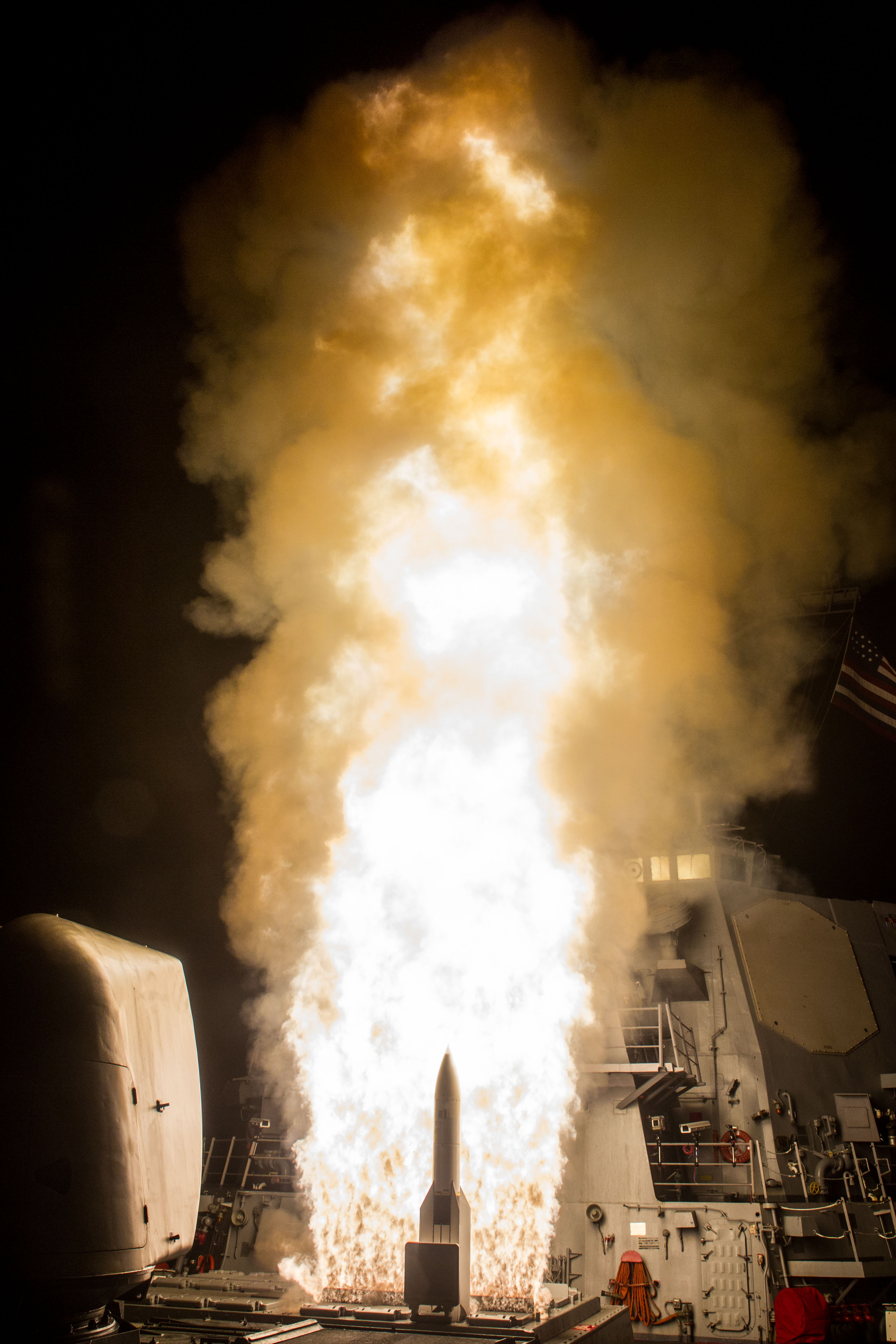
To get to a layered, in-depth homeland missile defense system developing key networking and communications links between ballistic missile defense ships and at-shore installations is crucial, the head of the Missile Defense Agency said this week.
A layered BMD network is necessary to deter great powers like Russia and China, and regional challengers like North Korea, Vice Adm. John Hill, director of the Missile Defense Agency, said Tuesday.
“We need global coverage” in sensors, from the ground and sea to space to identify threats, Hill said during a Heritage Foundation event. “What we really need is to have that global coverage for maneuverability” that would take into account hypersonic weapons on cruise missiles, an area where Moscow and Beijing have made steady and large investments.
“These are complementary systems,” Rebecca Heinrichs, a missile defense expert at the forum at the Heritage Foundation, said, referring to Aegis Ashore and the BMD systems on ships, Army Patriot, and Terminal High-Altitude Area defense systems.
“This is critically important for deterrence” against the range of threats coming from China and Russia. “It is something we absolutely have to have,” Heinrichs said.
She added that North Korea’s successful tests of long-range ballistic missiles identifies them as posing a threat to Hawaii, Guam and the Pacific Coast of the mainland United States. At the same time, Iran showed the power of its long-range ballistic missile program by successfully placing in orbit its first military satellite this spring.
Pyongyang and Tehran also are investing in longer-range cruise missiles to extend their reach regionally.
Hill and Heinrichs pointed to congressional support for building the space layer of sensors; but with the launching of the Space Force, the Pentagon held back on requesting funds for those sensors in the current budget submission.
The rationale for holding back the funds was the lack of clarification on whether the Space Force had authority over all the sensors or each of the other services would have control over parts.
When asked about aging ground-based interceptors near Fort Greely, Alaska, Hill said the agency now has the capacity to fully evaluate the system hardware. He said the same approach to testing everything is happening “with the constant iteration of software.” With the increased numbers of interceptors, the testing can be done “without ever having to fly,” he said.
But Hill added a note of caution. “We’re never fast enough” because “pacing a threat is hard. …We’ve upgraded [the ground-based interceptors] to deal with the threat as we understand it today.” He said industry response to meet the new challenges has been robust.
Hill said the agency has sent to industry a request for proposals for the next generation interceptor. The accent in the request, he said, was “on speed and schedule” contained in the submissions.
As he said earlier in a briefing with reporters, Hill said that before the COVID-19 pandemic restrictions unfolded, the missile for the test of a ship-borne Aegis system downing a long-range ballistic missile was already in place on Kwajalein Atoll in the Marshall Islands.
“We were ready to go to the Pacific with an Aegis ship [USS John Finn, DDG-113],” he said.
Then the lockdown restrictions due to the COVID-19 pandemic were put in place.
The test ranks high in agency priorities because it is “against a real long-range ballistic missile,” not a simulation, as North Korea’s missile arsenal grows in numbers and range. A similar land-based interception test was conducted at Vandenberg Air Force Base, Calif., three years ago.
But the pandemic’s impact continues now, he added, with a 21-day quarantine in place for arrival on the islands and Hawaii’s restrictions on travelers arriving there who have not tested negative raising questions of exactly when the firing will take place.
Hill said if successful, which he expects, the next test would be against a more sophisticated, complex ICBM.
“When we have success, we will not be done. We’ll have to work closely with the Navy” in designing a missile defense-in-depth approach for Hawaii and Guam.
“That’s what we’re doing with Aegis,” taking in one part of the whole missile defense system in the test but one that is maneuverable because it is ship-borne.
Hill said the idea is to “work with the warfighter. Where would you base a ship to defend Hawaii to defend Guam?” as results are gathered.





